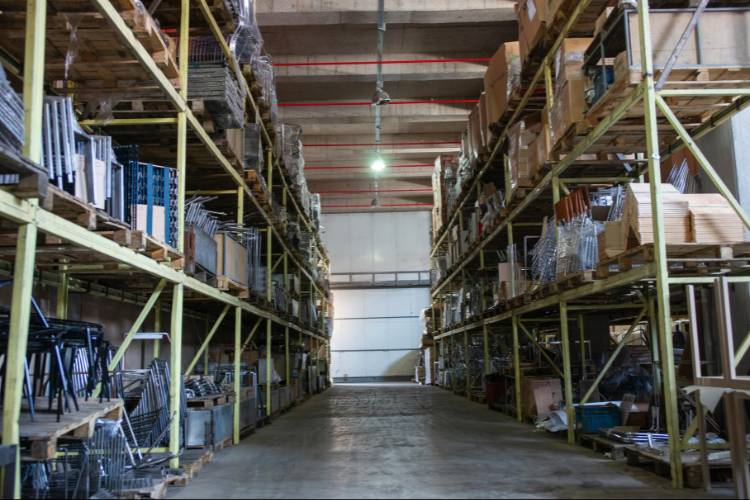The Great Recession pummeled the US economy, and few industries were hurt worse than construction. Some called it the “Toolbelt Recession,” which saw suppliers operating at half production capacity, and construction workers laid off at nearly double the rate of other industries. By the time it came to a close, the landscape of construction looked very different.
By definition, we are now in another recession. Whether or not this recession comes close to doing the damage that the last did to construction, industry leaders are taking lessons from 2008 and preparing now. And who better to take a cue from than the leaders who lived through the last recession?
Here, we’ll explore four areas of “recession-proofing” strategies for subcontractors, drawing insights from real subs who joined a meetup Billd held in September to discuss recession prep in construction. The meet up covered cutting costs, landing new projects, leadership and preventing risk with each session led by subcontractors who went through 2008. If you’re interested in attending meetups like this one, email grow@billd.com.
Table of Contents
1. Cost-Cutting Strategies
“Costs can be cut in any fashion,” says Donny Metcalf, a 30-year industry veteran and Senior Project Manager and Estimator at Lochridge Priest. But some methods are more effective than others, so what aspect of cutting costs do you focus on?
Choosing Familiar Projects With Predictable Costs – Metcalf explains that a recession demands a different kind of thinking about which jobs you take on, because costs can be controlled better in some projects. During the Great Recession, he and his team got more selective about which projects to entertain, and naturally, became more risk-averse. Discriminating between projects where you can predict costs and those that may throw you for a loop can be a good starting point for subs who are less inclined to take risks during the recession. It can pay to stick with what you know will perform well.
Purchase and Hold Materials – The material pricing crisis was no joke, and will be even less so if it persists during the next recession. Manufacturers aren’t holding their prices, so in an effort to cut costs, some subs are trying to purchase all the materials for a project up front. There’s also the matter of purchasing and storing materials for later use, which, if you have the storage accommodations, can be a smart move. But, it’s important to make sure your contracts are negotiated in a way to accommodate the billing of stored material, otherwise it’s difficult to carry the overhead.
Using Prefabrication – Prefabrication is the process of “using components made off-site in a factory, then transporting and putting them together on-site.” You’re still doing the work, but you’re just doing it at a different time and place. It’s not only a great way to cut costs, but to improve the quality of work you’re doing. The factory where the building components are made is stable, weather-controlled and more predictable than the field. Subs don’t have to worry about mishaps like weather-fueled delays, vandals or other annoying factors. A controlled environment greatly streamlines the construction process and reduces waste. Not using prefab entails more field work and hard labor, as well as wandering around the job site to fetch materials needed. Instead, your materials can be received at one spot, you can set up work tables at the appropriate height, condition the space if you need to, and speed up the production of redundant/similar materials.
This not only cuts down on labor expenditure and boosts productivity, it can result in price breaks on materials because it easily justifies bulk purchases. It also affects your project planning. In a prefab setting, you can more easily log how long it takes you to do something, so you can get your installation costs and time down to the decimal (let’s say 6.2 minutes vs. a guesstimated 10 minutes). As a result, you spend less on labor, and less on materials if you bulk buy. Metcalf suggests you can look to save 10-15%, with 15 being more likely, when you leverage prefab.
2. Strategies for Landing New Projects
You want to keep your pipeline strong in a recession, and Sarah Sagredo-Hammond, President of Atlas Electrical, AC & Plumbing has more than a few insights to offer on how to keep landing new projects throughout. Sarah took over her family business in 2008 and managed to increase revenue during the thick of the recession.
Prioritizing Project Management Like Never Before – Customer experience starts with internal communication. Turning GCs into repeat customers means presenting an organized front and delivering on your promises via effective project management. And if you want to stay busy in a recession, repeat business becomes all the more important.
It may mean trusting a new device or platform that can help you streamline your operations. To paraphrase one sub who attended Billd’s meetup, “you have to choose to let go and surrender control to the platform.” Many brands of project management software have built-in construction presets, but some are uniquely made for construction, like eSub. Great software keeps everyone clued into the status of a project and its individual tasks. The alternative is manual checklists and constant emailing to answer questions about project status, which can get sloppy.
Project management might work without a platform when you have 1-2 projects, but when it gets up to 6-8, you’re going to need one. “It’s not my passion to be a project manager, but it’s my passion to grow my business,” the contributor added. “Service-based platforms like Service Fusion can also help with customer retention,” says Sagredo-Hammond. But that’s not to say migrating from one platform to another isn’t a struggle. If you’re not on a platform, get one before the new recession is in full swing. If you are on one and you don’t like it, start migrating before the new recession is in full swing.
Become a Trusted Persona to GCs – When you have a streamlined project management system and team who can run it, it clears things off your desk. And you know what you should be doing with that extra time? Networking. Sagredo-Hammond stresses the importance of maintaining visibility with GCs through constant networking, even during a recession.
She advises subs to:
- Serve on local boards that pertain to your trade and industry
- Regularly go to industry events in your area
- Cultivate a public persona that the GC can see and trust
Beyond that, keep GCs on the same page. As you contend with material price volatility and the other stresses of a recession, it’s just as critical to keep the GC in the loop as it is your own team. Even if things aren’t going to plan, the GC will appreciate your emphasis on communication. But above all, focus on delegating your tasks to competent team members, to free up your schedule, as the face of the company, to do as much networking and selling as you can.
3. Leadership Strategies
“It’s hard to feel like a recession is looming when you’re in year 14 or 15 of an uptick in construction work,” says Ernie Adams, VP of Waterproofing Sales at Southwest Construction. At least, that’s what he has seen around him in Texas. We may not be seeing the effects of recession just yet, and that can make it easy for business leaders to feel complacent. But don’t lean into that complacency when you could’ve used this time to be proactive about planning the leadership strategies of recession. Ernie offers these tips to construction business leaders as the new recession kicks into gear:
Be Agile in the Type of Work You’re Willing to Do – This may seem at odds with a piece of advice we provided in the Cutting Costs section earlier. And if you happen to be more risk-averse, that strategy can still pay off. However, there’s always the chance that those predictable projects might be in short supply during a recession. Then what? It may be good to not go after a single niche, so you can diversify when project availability dwindles. If you happen to be more comfortable with risk, shift the type of work you’re willing to go after: if one dependable sector goes down 25%, find that 25% somewhere else. If 40% of your work was allocated for development, be willing to shift to something like habitat restoration or government work when development is dry. After being primarily private sector, Ernie branched out into public sector work. Diversification was the key for the company where Ernie Adams worked during the Recession as they managed keeping revenue stable.
Adopt a Calm Mentality – When things got dicey in 2008, Ernie Adams’ company leaders simply said, “We’re not going to participate in the Recession.” They retained their composure, were calm and didn’t panic. By “not participating,” they meant that they intended to move forward, find opportunities and get the right jobs regardless. Even if that meant dropping their margin, they were willing to be flexible for the right job, with the right reliable customer. They challenged their estimators to not throw loose numbers at the wall. “Let’s sharpen our figures,” Ernie advised. More accurate bids and flexible margins kept them in business during the Recession, and it was fueled by a calm, “We can do this” mentality.
4. Risk Reduction Strategies
Risk is rampant in construction. To that point, Andee Hidalgo, Owner of Spearhead Construction, shared that claims and legal disputes doubled from 2020 to 2021 alone. The average claim size went from $20 million to $40 million, in a year. Material price volatility presents a risk all its own. Pay apps can take ages to come in. Many subs also experience operational risks when they transition to commercial work. Hidalgo absorbed some excellent risk reduction strategies throughout the last Recession, which we’ll explore with you now.
Combatting Material Pricing Volatility – This is perhaps one of the greatest risks subs are dealing with these days, as they can throw off the margins and timelines of projects. But there are sound strategies to offset it. Hidalgo shared an experience when, during a large landscape decking project, the wood product specified had a much longer lead time than she and her team were used to. To offset the risk involved, they entered into a letter of intent with the GC, which required the GC to make the deposit for the materials. It also contained a clause that said Hidalgo’s team would still be paid for the work they performed in procuring the materials, no matter the outcome of the project. She asserts that a letter of intent can be useful to subs in situations like this.
Strategic Contractual Amendments and Negotiation – At one time, “I didn’t realize how much of the contract we could actually negotiate,” Hidalgo says. Scope is negotiable, change order parameters are negotiable, markup is negotiable, schedules and payment terms are all negotiable. Here are some contractual components you can consider to help offset risk:
- To offset the stress of making sure her laborers were paid consistently even before the pay app came in, Hidalgo has found that some GCs are willing to pay labor every two weeks if you negotiate that term into your contracts.
- One sub shared their tactic of changing from “Just in Time” inventory to “Order Upon Contract,” and diligently reminding their contractors of deadlines when submittals are in limbo pending approval. For that reason, you can work the sending of notice letters into the contract itself. These letters serve as an excellent paper trail to safeguard against future issues if you need to claim damages or disputes arise.
- Include contractual language that allows you to capture and bill for unexpected material price increases. Government contracts often have certain notification clauses, so that you have 48 hours to send a notice that the price is going to increase.
- It’s incredibly important to have a milestone schedule in the contract, and after signing, there has to be a project schedule. Delays on the front end can’t always be made up by slamming the finishing trades; a tight project schedule can safeguard against that, as can working with the site superintendent to address any issues that can impact the delivery of your scope.
Adopt an Electronic Procurement Process – Most subs are working off Excel to track procurement, but more thorough tracking is needed. When it comes to the gradual digitalization for all industries, agriculture and construction are the bottom two industries when it comes to digital adoption. You’ll naturally want to keep an eye on inventory, when you bought, current levels, and what your next order will be. In fact, you can use efficient tracking as a frame of reference for when you need to send out notification letters that pertain to the status of materials. If you’re not tracking it electronically, something will get lost in the sauce. eSub can be an excellent tool for this.
Document, Document, Document – Paper trails are your best friend. And your best bet to ensure ample documentation of every word and decision made on the job during these uncertain times is to specifically delegate someone whose job it is to do that. Have someone take ownership of it, whether that’s the foreman on the job noting changes in the job condition, or a CFO annotating changes in invoices, it’s important for someone to be assigned to the task.
Want More? Email grow@billd.com to Join Our Monthly Subcontractor Meetups
All of the insights contained in this article came out of the Subcontractor Meetup that Billd held on August 24th. Subs gathered from all over the country to go into their virtual meeting room of choice, where they discussed one of the four topics above. Ideas were exchanged, insights were harvested, and subs came away better equipped to deal with the recession.
And if you missed it, guess what: we’re having more. Each month, we’ll bring in industry experts and subs across the country to discuss pressing topics in construction. Email grow@billd.com if you’re interested in attending our next meet up.








